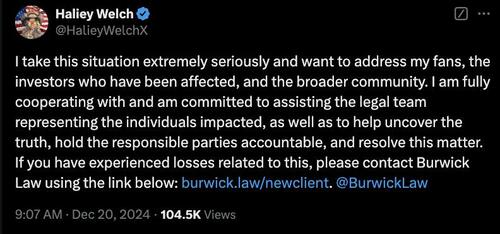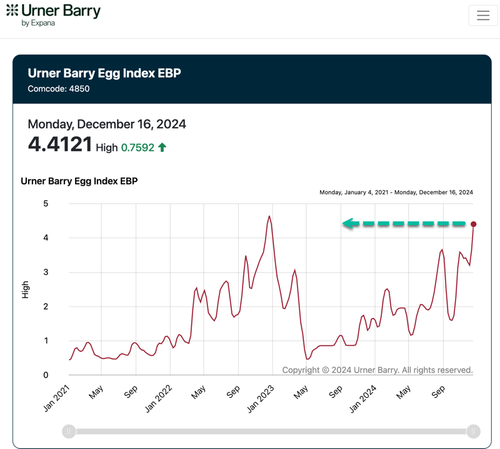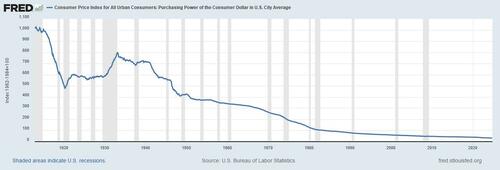Authored by Jeffrey Tucker via The Epoch Times,
For all our lives, we’ve been subjected to forced seasonal time change. Spring forward, fall back. That’s how we learn from childhood how to remember this.

We are also told the reason early on. We are extending daylight hours. But only a moment’s thought reveals this to be untrue. The light you gain from a one-hour change is borrowed from later in the day.
Government cannot magically make the day longer.
It’s like the old joke, supposedly from an “old Indian” who points out that you cannot make a blanket longer by cutting off one end and sewing it on the other.
I’ve never met anyone who approves of this massive disruption in our sense of time. Some people prefer Standard Time, while others prefer Daylight Saving Time, depending on their area within a given zone. But regardless, it seems as if everyone agrees that we should stick to one version of time and not change it so brutally in the middle of a year.
To be sure, all this became mechanically easier once time became digital. We don’t have to have friends, family, neighbors, and the TV yelling at us to turn back the clock or bump it forward. But it seems as if there are always a few clocks around that do not automatically change, such as the kitchen clock with the battery or the oven clock. Then we have to figure out how the stupid thing works and fuss with it, twice per year.
Every study shows that this disruption is terrible for health, as it disrupts sleep patterns and contributes to mental fatigue and even depression. It is associated with increased hospital admissions and even car crashes. This should not shock us. Our bodies are regulated by patterns of the sun, more so than we know.
Then there are the missed appointments.
If everyone hates it so much, why does it persist? It keeps happening simply because it keeps happening. No one knows how to get rid of it. While there is widespread public hatred of the practice, there is no real lobbying force to do anything about it.
Forced seasonal time disruptions are the paradigmatic case of a system that just keeps going on because no one really knows how to stop it, even though no one really likes it.
Fortunately, President-elect Donald Trump has an uncanny sense of the public mood. He is the first political figure in my lifetime who has openly blasted Daylight Saving Time and sworn to end it on the federal level. If states want to keep it, fine. My prediction is that it will go away completely. That’s a good thing.
Oddly, I find myself thrilled by this! It thoroughly confuses children, dogs, and adults, too. The whole crazy business began during World War I as a way to conserve energy and cause the daylight to arrive earlier in the day for purposes of munitions manufacturing. Others say there were some agricultural reasons, too.
The reason that this all began had plenty to do with a fashionable scientism of the time. Elites had come to enjoy toying with all things under the general belief that mechanized schemes could override nature itself. This affected so much along with the rise of indoor lighting, flight, steel bridges, internal combustion, telegraphic communications, the telephone, and recorded sound. It seemed as if there was nothing that could not be engineered to perfection, even the rotations of the sun.
Remember that a few decades earlier, there was already a huge controversy over time in the United States. When the railroads came along and gained political power, they pushed hard for unified schedules in zones so that people would not arrive at an earlier time at their destination than when they left.
It was common before about 1885 that every town kept its own version of local time. How was that determined? Very simply: When the sun is overhead, that is noon. Surrounding areas generally deferred to the time on the city and town clocks. This also fits with the sundial. There were no time zones, but rather just normal time. Everyone knew what it was.
Once the railroads came along, they lobbied mayors to adopt a more unified system. As a result, many acquiesced, much to the annoyance of many people who simply could not understand how it was that an industrial power could presume the right to define time in its own profitability interests.
For some years, clocks in the United States commonly displayed the actual time (or local time) plus what they called railroad time.
The railroads eventually prevailed. The United States was divided into four time zones, regardless of local time. For the first time in the history of the planet, the sundial no longer made any sense. What we called time was completely severed from any measurement of time drawn from natural patterns. We came to be managed by industry rather than reality.
If you think about the sheer intellectual arrogance of that, it is rather shocking. I like to think that I would have been among the resistors to this ridiculous trick from 150 years ago.
If you are curious about this, you can look up your actual time in your area right now. You can go to mysolartime.com and see exactly what time it really is right now, no matter what your smartphone says. From where I am typing right now, the actual time is nine minutes later than the clock says.
I urge you to do this, and think about what this means. If you are really feeling rebellious, you can start adhering to your local time just for the fun of it.
Up with local time and down with railroad time!
In any case, there is something wonderful about how everyone seems to be rethinking everything in our times. It seems like we are getting rid of the fluoride in the water after more than half a century of awful medicalization via public water supplies.
The effort to get rid of Daylight Saving Time is very similar, taking on an annoyance that should have ended long ago, finally through an authoritative voice who can do something about it.
Yay! I’m thrilled. But if it were up to me, I would go further and directly target the time zones themselves. They are the real source of the problem and the reason why some people favor Daylight Saving Time and others favor Standard Time, depending on which side of the zone you live.
The truth is that neither is correct. They are both fake versions of actual time. The actual time from the ancient world until relatively recently is a simple matter of the sun. When it is directly overhead, it is the noon hour or high noon. That’s it and nothing more. The rest follows from that.
Again, we have tools now that can tell you with great precision what time it actually is.
How to schedule meetings across long distances? The easy way is to use Coordinated Universal Time. It would take a day or two to get used to, but life would become so much easier. Just one time for the world for scheduling all things, and then we have local time, which is the time standard by which we live in the course of our lives. It’s what we should have done to begin with.
Nonetheless, scrapping time changes is an obvious beginning. The 150-year history of government/industry intervention in time is the classic case of bad policy imposed to fix previous bad policy. It was never a good idea to replace real time with constructed/imposed time. Repealing Daylight Saving is a good start.
Maybe if all goes well, we won’t be springing forward after all. How merciful that would be!
* * *
Views expressed in this article are opinions of the author and do not necessarily reflect the views of The Epoch Times or ZeroHedge.














